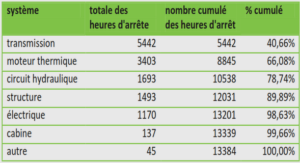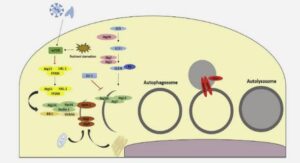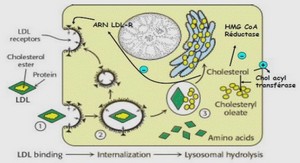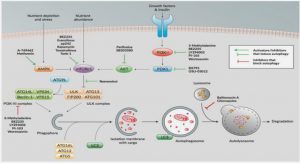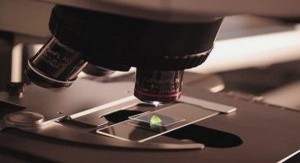La vélocité du courant: considérations morphologiques et autres effets
De ce qui précède, il apparaît clairement que la vélocité du courant est une composante importante dans l’histoire de vie des poissons en général et des Salmonidae en particulier (Davison, 1997; Pakkasmaa et Piironen, 2001). Comme susmentionné, la locomotion des poissons est intimement liée au profil hydrodynamique auquel ils font face et ce d’autant plus que la forme des poissons change au cours du développement (Batty, 1984; Webb, 1984a,b; Osse et van den Boogaart, 1995; van Snik, van den Boogaart et Osse, 1997). Compte-tenu qu’en fonction de l’âge et donc de la forme du poisson, le rapport des forces de viscosité sur celle inertie se modifie, il est logique que la vélocité du courant influence la morphologie externe du poisson; mais dans quelles mesures?
D’un point de vue purement théorique plus la vélocité augmente plus il est prédit que la forme du poisson soit hydrodynamique (Fischer-Rousseau, Chu et Cloutier, 2010). Cela signifie avoir une forme qui maximise l’efficacité de locomotion tout en réduisant les forces de trainée imposées par le fluide (Lighthill, 1970; Webb, 1982; 1984a,b; Webb and Weihs, 1986). A contrario, si la vélocité du courant est moins élevée, donc qu’elle n’oblige pas le poisson à se maintenir activement dans la colonne d’eau afin de lutter contre le courant (i.e., steady sWimming), la morphologie du poisson tendra vers une forme qui maximise la manoeuvrabilité et les départs rapides (Webb, 1982; 1984a, b; Lauder and Drucker, 2004). Un consensus se dégage des études conduites ces dernières années sur l’effet de la vélocité du courant sur la morphologie en terme de taille et de forme chez les Salmonidae. Les changements des traits morphométriques sont directionnels et espèce-dépendants (Imre, McLaughlin et Grant, 2001, 2002; Pakkasmaa et Piironen, 2001; Azuma et a/., 2002; Peres-Neto et Magnan, 2004).
C’est-à-dire que le hauteur du corps par exemple, augmente avec la vélocité du courant chez le Saumon de l’Atlantique (Sa/mo sa/ar) (Pakkasmaa et Piironen, 2001) ainsi que chez l’Omble chevalier et l’Omble de fontaine (Sa/velin us fontinalis) (Peres-Neto et Magnan, 2004) alors qu’elle diminue chez la Truite brune (Sa/mo trutta) (Pakkasmaa et Piironen, 2001). Toutes ces études s’accordent sur le fait que les changements de forme du corps sont des réponses plastiques considérées comme adaptatives au regard des exigences fonctionnelles associées aux conditions hydrodynamiques (Hunt von Herbing et a/., 1996; Imre, McLaughlin et Grant, 2001, 2002; Pakkasmaa et Piironen, 2001 ; Azuma et al. , 2002; Peres-Neto et Magnan, 2004). De plus, la réponse morphologique par le biais de la plasticité phénotypique induite par la vélocité du courant se manifeste rapidement (Pakkasmaa et Piironen, 2001). Néanmoins aucune de ces études ne s’est concentrée sur les périodes juvénile ou sub-adulte chez ces espèces, aucune n’a pris en compte la composante développementale. La seule étude qui fait exception montre que contrairement à ce qui pourrait-être attendu, les patrons de variance-covariance de la forme chez les alevins d’Omble de fontaine en milieu naturel ne correspondent pas à ceux des juvéniles (Fischer-Rousseau, Cloutier et Zelditch, 2009).
Par conséquent, inférer la forme des périodes ontogénétiques précoces sur la base de la variation de celle observée chez des poissons juvénile et/ou adulte apparaît non-fondé ou à tout le moins spéculatif. D’après FischerRousseau, Chu et Cloutier (2010), deux prédictions relatives aux interactions entre la forme du corps, les exigences fonctionnelles de la locomotion et l’augmentation de la vélocité du courant peuvent être faites . Premièrement, une forme de corps robuste, haute et compressée latéralement maximise la manoeuvrabilité et les départs rapides alors qu’une forme plus élancée telle une « torpille » maximise la nage soutenue (Webb, 1982; 1984a,b; Taylor et McPhail, 1985). Deuxièmement, un pédoncule caudal étroit et compressé latéralement est censé être bénéfique à la performance de nage (Lighthill, 1970; Webb, 1982; 1984a,b; Webb et Weihs, 1986). Ainsi, advenant qu’un gradient de vitesse du courant soit de lent à rapide, le gradient de morphologie devrait passer d’une forme trapue et robuste vers une forme plus allongée et arrondie (Fischer-Rousseau, Chu et Cloutier, 2010).
Rearing and sampling procedures
The recirculating water system (Aquabiotech Inc., Quebec, Canada) was designed with four pairs of canals (i.e., one treatment canal and one replicate canal per treatment), each with a 6 1 volume of experimental swimming zone (ESZ) (60 cm long x 12.5 cm wide x 8 cm height). Each pair of canals was controlied independently for temperature (from 5 ± 0.1 °C to 30 ± 0.1 °C with a central glycol cooling system), water recirculation (up to 99.9%) and biofiltration (15 to 18 kg/m\ Each canal was equipped with a motor to control the water velocity (0.15 ± 0.01 cm/s to 10 ± 0.1 cm/s) and different stabilizing grids were installed at the front and rear of the ESZ to obtain a laminar flow. The experiment consisted in rearing 1,224 fish in each canal during 100 days. Day 0 of experiment corresponds to the day when the experimental fish were transferred from the incubator trays to the velocity canals. Transferred fish were on average 3 days post-hatching (dph) when they were first exposed to the water velocity treatment. Four water velocities with one replicate per velocities were used and kept constant throughout the experiment: A = 3.2 cm/s (fast), B = 1.6 cm/s (medium), C = 0.8 cm/s (slow), D = 0.4 cm/s (still). The velocity treatments are given in absolute values and will be referred hereafter by their corresponding letter. In order to prevent thermal shock post-hatching , water temperature was raised gradually in each canal, from 6 to 9°C at a rate of 0.25°C per day.
Fish were gradually fed after 80% yolk-sac resorption with Artemia (Aquamerik, Ouebec, Canada) enriched with Selco (Brine Shrimp Direct, Utah, USA) for a period of 20 days to ensure similar distribution and access to food to ail experimental groups. When feeding behaviour was weil established in ail canals, the fish were shifted to an adapted formulated food (Nutra HP, Skretting, N-B, Canada) and fed to satiety until the end of experiment. Water physicochemical parameters, specifically water temperature, pH, percentage of dissolved oxygen, alkalinity, ammonia and nitrite, were monitored daily and kept within salmonid tolerance limits (Johnston, 2002). Light intensity was of approximately 75 lux. A fixed photoperiod (12h:12h) was programmed for the entire experimental period. A photoperiod controller Sunmatch ™ (Aquabiotech Inc., Ouebec, Canada) with a electronic dimmer MRA™ (Aquabiotech Inc., Ouebec, Canada) were used to simulate dawn and dusk in order to avoid for fish drastic changes between light and dark. Light was programmed to automatically turned off within a 26 min range. Low mortality occurred in each treatment throughout the experiment (Iess than 1 % per treatment per day) and was not significantly different among treatments (ANOV A: df = 3; F = 0.405; P = 0.749). From day 0 to day 100, specimens were randomly sampled in each canal. Each sample was then rapidly fixed in neutral buffered formalin (Humason, 1979) for two days and then transferred to 70% ethanol for storage. The experiment took place from December 2004 to April 2005.
Data collection
Four specimens per canal (i.e ., eight specimens per treatment) were sampled every other day, starting from day 0 to day 100. Images of the left side of each specimen were captured for a total 1,632 images. For specimens smaller than 40 mm (day 0 to day 82), images were acquired through a Oicam digital camera with CCD sensor (Meyer Instruments, Texas, USA) mounted on a Leica MZ16A binocular microscope, whereas images of larger specimens (day 84 to day 100) where taken with an Olympus Camedia C5060 digital camera mounted on a stand with two lateral lights. We used the Northern Eclipse Software (6.0, Empix Imaging Inc., Ontario, Canada) connected to a graphic pad for the acquisition of 10 morphometric traits on each image (Fig. 1.1). Trait measurements were adapted from Peres-Neto and Magnan (2004). Trait abbreviations are as follows: HL = head length, HH = head height, YSH = yolk-sac height, BH = body height, DFB = dorsal fin base, AFB = anal fin base, CPH = caudal peduncle height, CFH= caudal fin height, SL = standard length and TL = total length. Two other traits [caudal fin length (CFL) and body length (BL)], were derived from other parameters as follows : (1) CFL = TL – SL and (2) BL = SL – HL.
Thus, 12 traits were analyzed in this study. Different combination sets of traits were used in the different analyses (see below). In order to evaluate the measurement error (ME) associated with each trait, three non-consecutive series of measures on 25 randomly selected specimens were do ne following the method of Bailey and Byrnes (1990) (Table 1.1). phenotype to a value on an enviranmental gradient for a given genotype (Fuller, 2003). In the present study, the genetic variability was considered as representative of a given genotype taking into account the small number of genitors used (i.e. , four males and four females) as weil as the fact that ail specimens came fram the same strain. The second objective (i.e., the examination of each particular trait’s developmental plasticity response in relation to water velocity) was undertaken by comparing the coefficients of variation (CV) on ten of the twelve traits. Two traits (TL and YSH) were excluded from the analyses. TL was excluded because its CV profile was similar with SL and YSH was excluded because yolk-sac absorption data are not available thraughout ontogeny. The CV is a simple measure identified as a good index of phenotypic plasticity that is size-independent (Schmidt and Starck, 2004); however, drawbacks may occur with the use of CV. According to Polly (1998) a ME of less than 10% is mandatory in order to limit: (1) the negative correlation between size and the CV index and (2) its effect on apparent variability on traits of small size. Our data fulfills Polly’s (1998) recommendations (see Table 1.1). Our original data set was split into ten periods of 10 days and the CV was calculated at each period for each morphometric trait for ail experimental treatments.
INTRODUCTION GÉNÉRALE |

